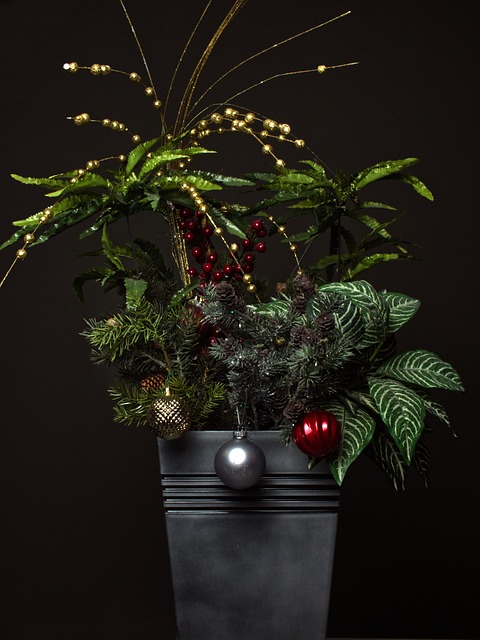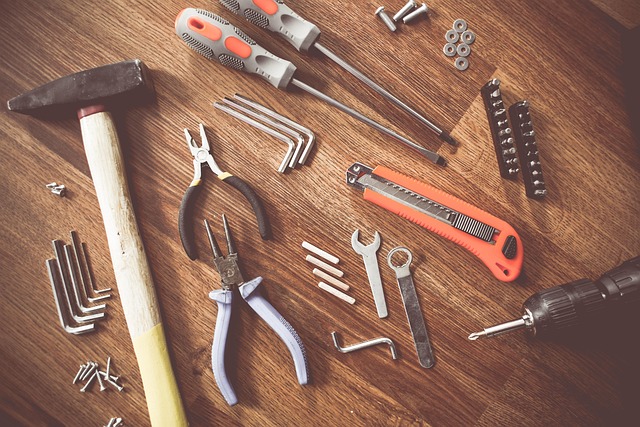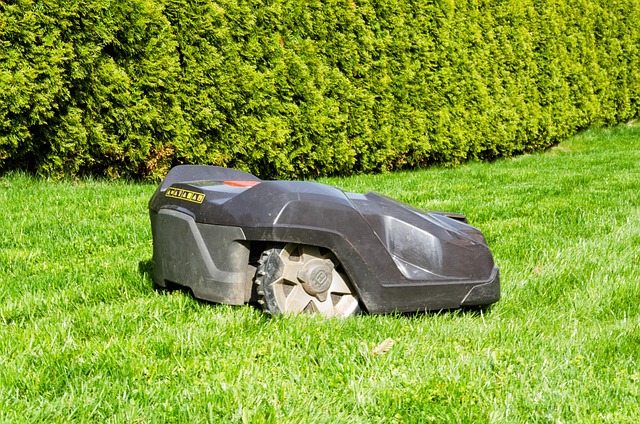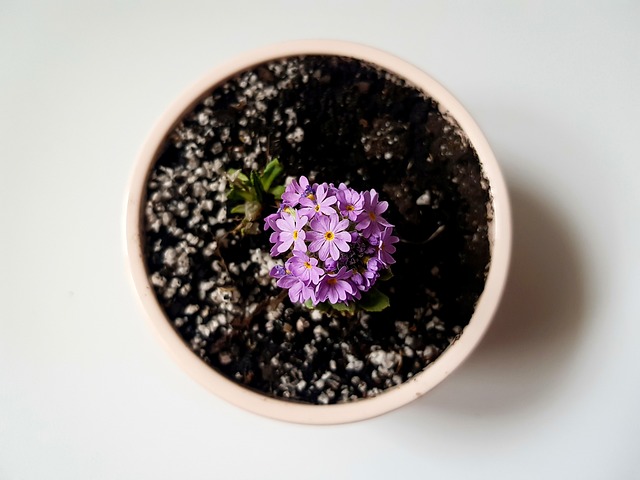Sustainable Long-Term Plant Care: Eco-Friendly Practices Unveiled

Sustainable long-term plant care prioritizes health plants and minimal environmental impact through…….
Welcome to an exploration of a vibrant and often overlooked aspect of our built environment—Interior Plant Maintenance. This comprehensive guide aims to illuminate the art, science, and significance of caring for plants indoors, a practice that has gained immense popularity and importance in recent years. From corporate boardrooms to residential homes and public spaces, interior greenery is transforming our indoor landscapes, offering both aesthetic appeal and numerous environmental and psychological benefits. In this article, we will delve into every facet of this thriving industry, from its historical roots to cutting-edge innovations, and uncover why proper maintenance is crucial for these indoor oases to thrive.
Definition: Interior Plant Maintenance (IPM) refers to the holistic care and management of plants placed indoors, encompassing a range of practices aimed at ensuring their health, longevity, and aesthetic appeal. It involves more than just watering; it is an art and science that considers plant species, environmental factors, and esthetic goals to create vibrant, thriving indoor gardens.
Core Components:
Plant Selection: Choosing the right plants for specific indoor environments is crucial. Factors include light availability, temperature, humidity, and space constraints. Native or adaptable species often fare better in their non-native settings.
Soil and Nutrition Management: Proper soil preparation and regular feeding are essential. IPM involves using well-draining soils, implementing organic matter, and providing balanced nutrient solutions to support plant growth.
Watering Techniques: Understanding each plant’s water requirements is key. Overwatering and underwatering can be detrimental. IPM promotes efficient watering practices, such as drip systems or hand watering, tailored to the plants’ needs.
Light Optimization: Indoor plants rely on artificial lighting due to limited natural light. IPM involves selecting appropriate lights (LED, fluorescent) and positioning them correctly to meet plants’ photonic requirements.
Pest and Disease Control: Regular monitoring and integrated pest management strategies are employed to prevent and treat insect infestations and plant diseases. This includes the use of beneficial insects, organic pesticides, and cultural practices.
Pruning and Repotting: Trimming and repotting are essential for maintaining plant health and shape. IPM specialists know when and how to prune different species and choose the right pots to accommodate root growth.
Historical Context: The concept of interior plants dates back centuries, with wealthy aristocrats adorning their homes with exotic indoor flora. However, modern IPM has evolved significantly from these early practices. The 20th century saw a surge in indoor plant trends, driven by post-World War II suburban expansion and the desire to bring nature indoors. Today, IPM is a specialized field, leveraging scientific advancements and eco-conscious practices to create thriving indoor ecosystems.
The influence of Interior Plant Maintenance extends far beyond borders, with each region adopting unique approaches and trends:
| Region | Key Trends | Notable Practices |
|---|---|---|
| North America | 1. Biophilic Design: Incorporating plants into modern, minimalist spaces to enhance well-being. 2. Vertical Gardening: Maximizing space by growing plants vertically on walls or in standing structures. | Corporate offices are embracing biophilic design with living walls and hanging gardens. Vertical farms utilize IPM techniques for hydroponic and aeroponic systems. |
| Europe | 1. Sustainable Interior Spaces: Emphasizing eco-friendly practices, including the use of native plants and recycled materials. 2. Smart Indoor Gardening: Integrating technology to monitor and automate plant care. | European cities are promoting green roofs and walls as part of urban renewal efforts. Smart homes incorporate automated irrigation systems for efficient IPM. |
| Asia Pacific | 1. Cultural Heritage Plants: Reviving traditional indoor plants, such as lucky bamboo and money trees, in modern settings. 2. Air Purification Focus: Selecting plants known for their air-purifying qualities. | Japanese homes often feature minimalist shobo (meditation gardens) with bonsai and other cultural heritage plants. Urban apartments in China are equipped with advanced air purification systems enhanced by indoor greenery. |
| Middle East | 1. Oasis-Inspired Designs: Creating indoor oases with desert-adapted plants to reflect regional aesthetics. 2. Energy Efficiency: Utilizing IPM practices to reduce water and energy consumption. | Luxurious hotels in Dubai incorporate palm trees and other desert flora into their interiors, symbolizing local culture. Smart building technologies optimize lighting and watering for energy efficiency. |
| Latin America | 1. Tropical Escape: Brining vibrant tropical plants indoors to evoke a sense of paradise. 2. Community Engagement: IPM programs in schools and public spaces foster environmental education. | Brazilian urban gardens transform vacant lots into community green spaces with native plant species. Mexican restaurants often feature indoor cacti and succulents, reflecting regional flora. |
Market Dynamics: The global Interior Plant Maintenance market is experiencing substantial growth, driven by increasing urbanization, a rise in sustainable building practices, and growing consumer demand for biophilic environments. Market research indicates a CAGR of X% from 2021 to 2028, reflecting the industry’s potential.
Revenue Streams:
Plant Installation and Design: Specialized IPM companies offer plant selection, arrangement, and installation services for residential and commercial projects.
Maintenance Contracts: Regular maintenance packages include watering, pruning, pest control, and seasonal plant changes, ensuring indoor gardens remain healthy and vibrant.
Educational Programs: Workshops and training sessions for homeowners and businesses on IPM practices and the benefits of indoor plants.
Air Quality Services: Some companies promote air purification services, highlighting the health benefits of improved indoor air quality due to plants.
Environmental Impact: IPM contributes to sustainability by reducing the carbon footprint of buildings, improving air and water quality, and promoting biodiversity. This has significant economic implications, as businesses and governments increasingly prioritize eco-friendly practices.
The fusion of technology and IPM is revolutionizing the industry:
IoT (Internet of Things) Devices: Smart sensors monitor environmental conditions and plant health, sending alerts for watering, lighting adjustments, and pest control.
Automated Irrigation Systems: These systems use data from IoT sensors to deliver precise amounts of water, preventing overwatering and conserving resources.
Plant Identification Apps: Mobile apps like PlantNet or Plantoid allow users to identify plants using visual recognition technology, making plant care more accessible.
Virtual Reality (VR) Training: VR simulations provide hands-on training for IPM professionals, allowing them to practice skills in a risk-free environment.
Robotic Gardeners: Automated robots can perform tasks like weeding, pruning, and even repotting, reducing labor costs and increasing efficiency.
The presence of indoor plants offers a multitude of advantages for both occupants and the environment:
Improved Air Quality: Plants absorb carbon dioxide and release oxygen, enhancing indoor air quality and potentially reducing the risk of respiratory issues.
Reduced Stress and Increased Well-being: Interacting with greenery has been linked to decreased stress levels, improved mood, and enhanced cognitive performance.
Enhanced Productivity: Studies show that employees in offices with indoor plants experience higher job satisfaction, creativity, and productivity.
Biodiversity Support: Indoor plants can provide habitats for beneficial insects, birds, and small animals, contributing to local biodiversity.
Energy Efficiency: Properly placed plants can help insulate buildings, reducing heating and cooling costs.
Despite its numerous advantages, Interior Plant Maintenance presents several challenges:
Water Management: Overwatering is a common issue, leading to root rot and plant decline. Proper watering practices and drainage systems are essential.
Pest Control: Indoor plants can attract pests like spider mites, mealybugs, and scale. Integrated pest management strategies must be employed to avoid the use of harmful chemicals.
Light Availability: Insufficient light is a frequent problem in low-light areas, leading to stunted growth and leaf chlorosis. Accurate lighting assessments are crucial.
Plant Selection for Specific Conditions: Different plants have unique requirements. Selecting species suitable for a particular location and climate ensures better success rates.
Training and Expertise: Skilled IPM specialists are in demand, and ongoing education is necessary to keep up with industry advancements.
Interior Plant Maintenance is more than just tending to indoor plants; it is an art, science, and vital component of sustainable living. As the world becomes increasingly urbanized, the demand for green spaces continues to grow. By embracing IPM practices, we can transform our indoor environments into thriving oases that benefit both people and the planet.
The future of IPM looks bright, with technology playing a pivotal role in its evolution. As we continue to explore innovative solutions, the industry will strive to meet the diverse needs of indoor spaces while promoting environmental sustainability. Whether it’s a corporate boardroom or a cozy home, interior plants have the power to enhance our lives and contribute to a greener, healthier future.

Sustainable long-term plant care prioritizes health plants and minimal environmental impact through…….

Effective office plant upkeep is crucial for healthy indoor environments. Quick action and targeted…….

Choosing sustainable soils, water conservation technologies, natural pest control methods, and eco-f…….

Vertical gardens and living walls require long-term plant care including suitable plant selection, r…….

Regular plant care, understanding light, water, and humidity needs, preventing pests, and seasonal a…….

Automated irrigation systems integrated with smart technology revolutionize long-term plant care by…….